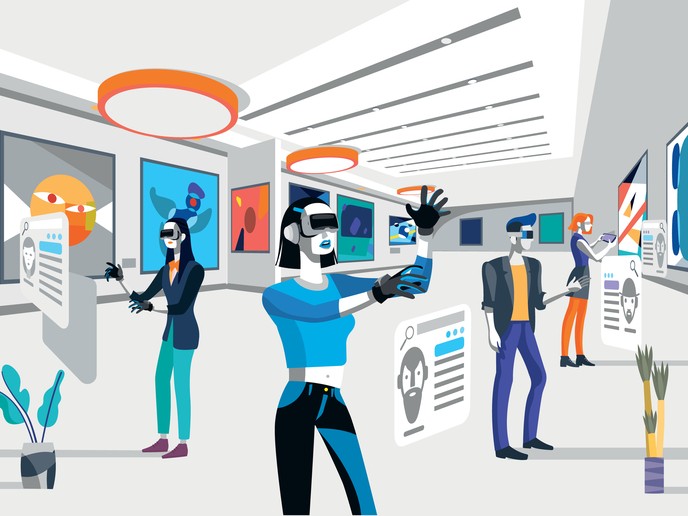A glimpse into the future of media and an outstretched hand to industry players willing to push technological innovation to the next level are just around the corner. During the 2020 Cannes Festival, the Immersify project team will showcase a whole new kind of immersive media experience combining high-resolution video, ultra-wide vision field, spatial sound and user interaction.

Those of you who’ve had a chance to visit the Atelier des Lumières in Paris or any other similar location-based entertainment (LBE) venue know this for a fact: the future of the media industry lies in higher image quality, immersive experiences and interactivity. Yet, no matter how fast technology evolves, technical barriers remain, so the main objective of the Immersify (Audiovisual Technologies for Next Generation Immersive Media) project has been to overcome them. “We have two main problems hindering the adoption of immersive technologies: insufficient resolution and quality of available devices, and the huge cost of implementing large LBE installations,” says Maciej Glowiak, Head of the New Media Department at the Poznan Supercomputing and Networking Center and coordinator of Immersify. “Besides, there is a lack of technological standards in a market often requiring tailored solutions.” Considering the human viewing angle of 120°, true immersion calls for resolutions above 8K which can only be achieved by a few, very expensive prototypes. A large LBE installation such as the Atelier des Lumières, for instance, requires over 140 projectors and 20 servers. Ensuring a return on investment therefore not only calls for unique experiences, it should also encourage users to return. A true conundrum that often discourages newcomers.
Breaking barriers to achieve immersive media
Immersify breaks these barriers by taking a comprehensive approach to immersive media. Since October 2017, the project team has been busy creating demonstrative content, documenting the process of creation, cooperating with artists and providing them with new technologies. One example of technological advancement is the adaptation of the HEVC coding technology to high-quality, immersive media. The new codec, developed by Spin Digital, is optimised for the likes of recordings from 8K cameras, 360° cameras, 3D rigs, computer-generated graphics and point clouds. Immersify also offers solutions for ultra-high-resolution media playback, streaming and displaying on various types of LBE visualisation installations. No matter how the installation is built, it can use the same encoding tools and display software. The project covers the entire production, processing and display chain. Among other things, the team has been working on applications to stitch images from multiple cameras to obtain a 360° panorama, immersive sound with a player able to decode ambisonics sound rendered to any number of speakers, and immersive interactive systems in 3D space. “Our partner Ars Electronica has worked with the BBC and ScanLab Projects to customise their laser scans of the large pyramid in Giza for 12K rendering, so as to use it in interactive applications. The resulting experience allows you to move around the interior of the pyramid and interactively choose between directions to explore this monumental building. And this is only one example of applications that may be developed in the future,” Glowiak enthuses.
Taking Immersify on the road
Immersify technology has been showcased at technology fairs such as NAB, IBC and InterBEE, and also among art communities. Project partner Marché du Film notably enabled the consortium to take part in the Cannes XR exhibition focused on immersive media and augmented and virtual reality, while a project booth at the Ars Electronica Festival allowed some 110 000 visitors to view demonstrations. Specific events were also dedicated to showcasing 8K resolution video streaming. “Commercialisation of the project’s tools is currently under discussion. Meanwhile, we would like to focus on enhancing the media playback and streaming modules to show the capabilities of immersive media in a consistent way,” Glowiak concludes.
Next-gen immersive media makes its way to technology fairs and cultural events
This project is featured in…
RESEARCH*EU MAGAZINE
The growing power of media content convergence
Issue 88, December 2019
